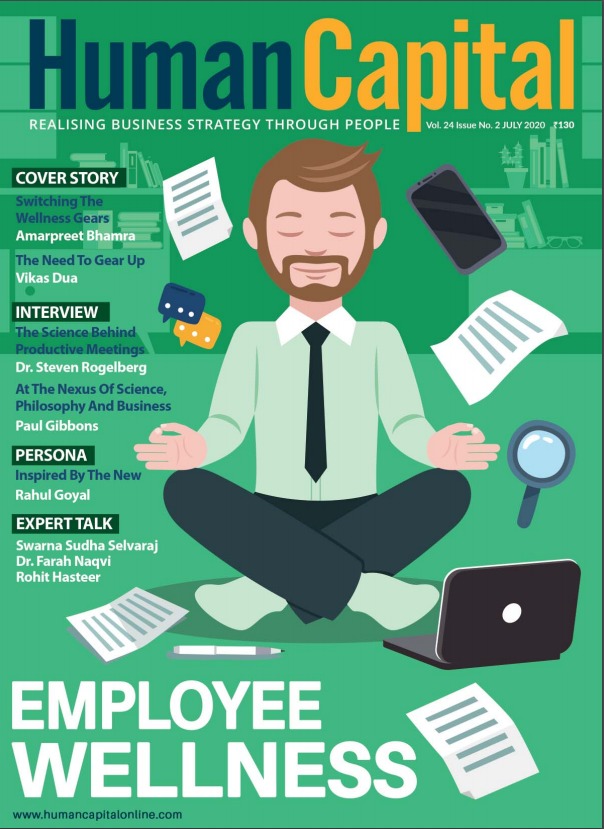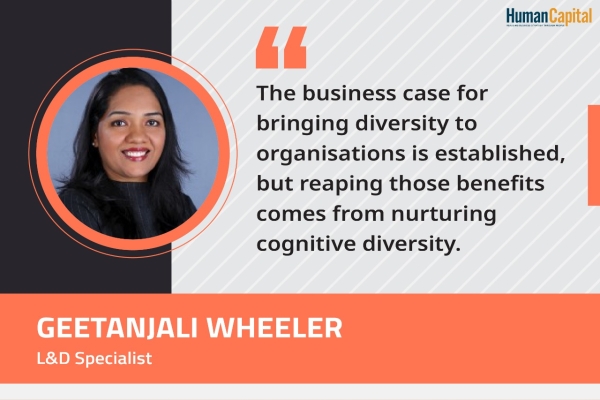The Law of Diminishing Marginal Utility — or the 10th Apple Effect — has significant ramifications for leaders and HR managers. By understanding this law, leaders can address their business predicaments and proactively plan and make appropriate outcome friendly decisions.
Once upon a time, a young boy was playing in the forest with his friends. He became so engrossed in the game that he ventured deeper and deeper into the woods, eventually distancing himself from his friends. When he realised he was lost, he walked for many fruitless hours, trying to find a way out. Darkness fell, however, and he fell asleep, exhausted and hungry. The next day, and the day after that, he tried finding his way out of the forest, but to no avail. By the end of three days, he was barely able to walk any further.
On the morning of the fourth day, he chanced upon an apple tree, full of ripe red apples. He shook the tree and picked up 15 to 20 of the juiciest fruits for his consumption. He then sat down under the shade of a tree and started eating the fruit. When he bit into the first apple, it tasted like the best thing he had ever had. He relished it, quickly devoured the second apple and then the third. By the time he reached out for the tenth apple, he was taking only a bite or two from each apple before discarding it and reaching for another. He was beginning to be satiated, and the apples no longer tasted as delicious as the first few had. This is the essence of the 10th Apple Effect, or as they say in economics, the Law of Diminishing Marginal Utility.
Diminishing Marginal Utility
The law states that everything else being equal, the marginal utility derived from every additional unit decreases as consumption increases. The first consumption of any unit has maximum utility, and every subsequent unit’s consumption results in less and less utility. “Utility” here represents an economic term meaning happiness, satisfaction or contentment. Marginal utility is the increase in happiness, satisfaction or contentment with every additional unit of consumption.
You’ll notice in the story above that the young boy derived maximum satisfaction or “utility” from the first apple he consumed. For every apple that he ate thereafter, his appetite became dulled, and consequently, his satisfaction levels fell. By the time he reached the tenth apple, he was simply not hungry anymore. The “value” or “utility” of the tenth apple was low. For a moment now, imagine what would happen if one were to offer the boy a few more apples to eat. He would find the very idea distasteful. This is an example of how the addition of units results in negative utility. Overconsumption is, for most products and services, a threat.
Are there lessons here for leaders and HR managers? Let’s look at three aspects of HR and explore how the 10th Apple Effect applies to them.
Lesson 1: Staffing
One of the most common complaints we hear from people managers, especially in the services sector, is the shortage of resources. Is it a boon to have a full-fledged team with a few resources to spare?
Consider a medium-sized branch of a bank where three tellers manage the usual workload. One of the tellers goes on leave, and the branch manager decides to get a substitute teller. All goes well for a while. The teller who had gone on leave returns after a few weeks, but the workload has increased slightly due to the festival season. The branch manager decides to retain the substitute teller as well as the three existing staff. The four tellers handle the increased workload quite well. Soon, however, the festive season comes to an end, and the workload trudges back to its normal levels. There are now four tellers doing the work of three. Naturally, they have spare time on their hands, and often one of the tellers has very little to do. This gives rise to two immediate management issues.
First and foremost, costs go up, and margins, efficiencies, and productivity go down. Secondly, the decreasing productivity results in diminishing motivation levels among the staff, and a general sense of unease hangs in the air. The substitute teller feels insecure. This may apply to most production and service scenarios. Adding additional workers beyond optimal levels results in lesser efficiencies.
Lesson 2: Employee productivity through intelligent compensation composition
In his widely acclaimed work, “Mental Accounting Matters” (1999), Richard H. Thaler showed that decisions are made and evaluated differently depending on how outcomes are perceived and experienced. His premise was that both the sources and the subsequent uses of funds are labelled in both real and mental accounting systems, and expenses are categorised into groups. Further, he stated that each component of mental accounting is considered independently and goes against the principle of fungibility in economics. This, in turn, influences choices.
Simply put, Thaler’s principle implies that different people evaluate their income components differently and that they value each of their income components individually, not as a collective amount. When Thaler’s study is superimposed with the 10th Apple Effect, it results in some interesting theories.
Jeffrey and Shaffer (2007) emphasised that any increase in the salary components will result only in a marginal utility for the employee as he will consider the increased components with respect to his base salary. On the other hand, any increase in non-monetary components of the salary will be evaluated in a different mental account.
This was later validated by Choi and Presslee’s studies (2016), which showed that employees perform better when they categorise performance-based pay components independently from their base salary. Significantly, employees evaluated their non-cash incentives differently from their cash components. Cash components were generally perceived to be used to meet necessities and essential good and services, whereas non-cash components were perceived to be used for indulgence and pleasure. Consequently, when employee compensation was increased through non-cash channels, performance levels peaked. Imagine having a handle on employee performance simply by determining how you compensate them, and not necessarily by how much!
Lesson 3: Employee motivation through recognition
Let us now move away for a bit from economics to organisational behaviour. It is common knowledge that appreciation as a form of recognition is an intrinsic component of every leader’s behaviour repository. How does the 10th Apple Effect impact such behaviour and affect employees?
Let’s walk through an example. Manager M is keen to increase employee engagement in his team and believes that appreciating his employees frequently and consistently will help him do so. He establishes a simple process such that on completion of every task of reasonable import, the employee is appreciated through a few words and a token gift from the manager. The first few times this was implemented, the employees did feel recognised and put their heart and soul into their future assignments. Over the next few weeks and months, however, employees noticed that they were not the only ones being recognised for completing their routine work; everyone else on the team was also being similarly recognised. Reward and recognition became a common fixture. By applying the process to all and sundry, the manager had inadvertently caused the 10th Apple Effect to kick in.
Gradually, the novelty of the initiative faded away, and employees began to feel a lack of spontaneity in the actions and words of the manager. Moreover, because the initiative was entirely process-driven, very little consideration was given to how the employees felt after receiving the words of appreciation and the gifts. Soon, employees stopped taking the recognition seriously, and motivation levels dipped.
How could this have been avoided? For one, tighter norms could have ensured that only the very best employees received recognition. Second, even for these employees, only the best achievements could have been rewarded. Last but not least, the nature of recognition could have been tweaked; for example, instead of repetitive words and gifts, employees could have been assigned more challenging and aspirational projects.
Conclusion
As seen in the examples above, the Law of Diminishing Marginal Utility — or the 10th Apple Effect — has significant ramifications for leaders and HR managers. By understanding this law, leaders can address their business predicaments and proactively plan and make appropriate outcome-friendly decisions.

Are you comfortable working with dispersed colleagues?
Trending
-
SBI General Insurance Launches Digital Health Campaign
-
CredR Rolls Out 'Life Happens' Leave For Its Employees
-
Meesho Announces 30-Week Gender-Neutral Parental Leave Policy
-
Microsoft Unveils Tech Resilience Curriculum To Foster An Inclusive Future
-
60% Indian Professionals Looking For Job Change Due To COVID: Survey
-
SpringPeople And Siemens Collaborate For Digital Transformation Push
-
86% Professionals Believe Hybrid Work Is Essential For Work Life Balance: Report
-
Almost 1 In Every 3 People's Personal Life Affected Due To Work Stress
-
Meesho Rolls Out Reset And Recharge Policy For Employees
-
80% Of Talent Leaders & Academics Say Pandemic Changed Skill Needs For Youth: Report
-
Hero Electric Rolls Out 'Hero Care' Program For Employees
-
Human Capital In Collaboration With ASSOCHAM Hosts Virtual Conference
-
IKEA India, Tata STRIVE Collaborate To Create Employability And Entrepreneurship Opportunities
-
SAP India, Microsoft Launch Tech Skilling Program for Young Women
-
DXC Technology, NASSCOM Collaborate For Employability Skills Program
-
Lenskart To Hire Over 2000 Employees Across India By 2022
-
Mindtree Launches Learn-and-Earn Program
-
Tata AIA Extends 'Raksha Ka Teeka' To Its Employees
-
Swadesh Behera Is The New CPO Of Titan
-
NetConnect Global Plans To Recruit 5000 Tech Professionals In India
-
Hubhopper Plans To Hire 60% Of Indian Podcasters By 2022
-
Corporate India Needs More Women In Leadership Roles: Report
-
Aon to Invest $30 Million and Create 10,000 Apprenticeships by 2030
-
Tech Mahindra Launches ‘Gift a Career’ Initiative for Upskilling of Youth
-
40% Women Prefer Flexible Working Options in Post-COVID World: Survey
-
3 out of 4 companies believe they can effectively hire employees virtually: Report
-
Vodafone , CGI and NASSCOM Foundation launch digital skills platform
-
Odisha: Bank, postal employees to deliver cash for elderly, differently-abled persons
-
Skill India launches AI-based digital platform for "Skilled Workforce"
-
Hiring activity declines 6.73% in first quarter: Survey
-
70% startups impacted by COVID-19 pandemic
-
Bajaj Allianz Life ropes in Santanu Banerjee as CHRO
-
Over 70 Percent MSMEs look at cutting jobs to sustain businesses
-
93 Per Cent employees stressed about returning to office post-lockdown
-
Johnson & Johnson India announces family benefits for same gender partners
-
Indian firms turning friendly towards working mothers
-
Welspun India names Rajendra Mehta as new CHRO
-
Wipro partners with NASSCOM to launch Future Skills platform



Human Capital is niche media organisation for HR and Corporate. Our aim is to create an outstanding user experience for all our clients, readers, employers and employees through inspiring, industry-leading content pieces in the form of case studies, analysis, expert reports, authored articles and blogs. We cover topics such as talent acquisition, learning and development, diversity and inclusion, leadership, compensation, recruitment and many more.
Subscribe Now












































Comment